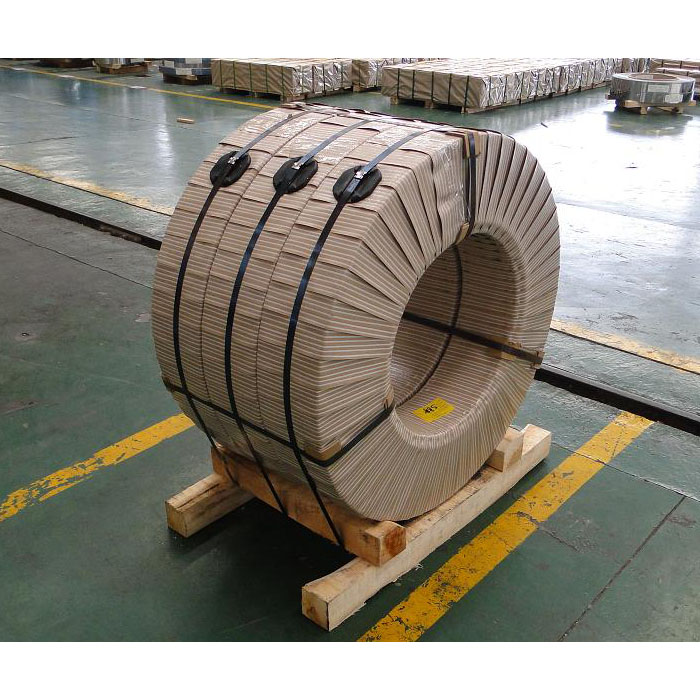The relationship between the physical properties of
stainless steel strip and temperature
(1) Specific heat capacity
With the change of temperature, the specific heat capacity will also change, but once the metal structure changes or precipitates during the temperature change of the
stainless steel strip, the specific heat capacity will change significantly.
(2) Thermal conductivity
The thermal conductivity of various stainless steel strips below 600 °C is basically within the range of 10~30W/(m·°C). As the temperature increases, the thermal conductivity increases. At 100°C, the thermal conductivity of stainless steel strip is 1Cr17, 00Cr12, 2cr25n, 0 cr18ni11ti, 0 cr18ni9, 0 cr17 Ni 12M 602, 2 cr25ni20 in order from large to small. The thermal conductivity order at 500°C is 1 cr13, 1 cr17, 2 cr25n, 0 cr17ni12m, 0 cr18ni9ti and 2 cr25ni20. The thermal conductivity of austenitic stainless steel strip is slightly lower than that of other stainless steels. Compared with ordinary carbon steel, the thermal conductivity of austenitic stainless steel strip at 100°C is about 1/4 of ordinary carbon steel.
(3) Linear expansion coefficient
In the range of 100 - 900°C, the range of linear expansion coefficient of various types of stainless steel strip is basically 130*10ˉˉ6 ~ 6°Cˉ1, and they increase with increasing temperature. The coefficient of linear expansion of precipitation hardening stainless steel strip is determined by the aging treatment temperature.
(4) Resistivity
At 0 ~ 900 °C, the resistivity of various types of stainless steel strip is basically 70 * 130 * 10ˉˉ6 ~ 6Ω·m, it will increase with the increase of temperature. When used as heating materials, materials with low resistivity should be used.
(5) Permeability
The magnetic permeability of austenitic stainless steel strip is very small, so it is also called a non-magnetic material. Steels with stable austenitic structures, such as 0cr20ni10, 0cr25ni20, etc., are not magnetic even if the processing deformation is greater than 80%. In addition, high-carbon, high-nitrogen, high-manganese austenitic stainless steels, such as 1Cr17Mn6NiSN, 1Cr18Mn8Ni5N series, high-manganese austenitic stainless steels, etc., will undergo phase change under large reduction process conditions, so they are still non-magnetic. At high temperatures above the Curie point, even highly magnetic materials lose their magnetism. However, some austenitic stainless steel strips such as 1Cr17Ni7 and 0Cr18Ni9 have a metastable austenitic structure, so martensitic transformation occurs during large reduction or low temperature cold working, which will be magnetic and magnetic. Conductivity also increases.
(6) Modulus of elasticity
At room temperature, the longitudinal modulus of elasticity of ferritic stainless steel is 200 kN/mm2, and the longitudinal modulus of elasticity of austenitic stainless steel is 193 kN/mm2, which is slightly lower than that of carbon structural steel. As the temperature increases, the longitudinal modulus of elasticity decreases and the transverse modulus of elasticity (stiffness) decreases significantly. The longitudinal modulus of elasticity has an impact on work hardening and tissue assembly.
(7) Density
High chromium ferritic stainless steel has low density, and high nickel high manganese austenitic stainless steel has high density. At high temperatures, the density decreases due to the increase in character spacing.



